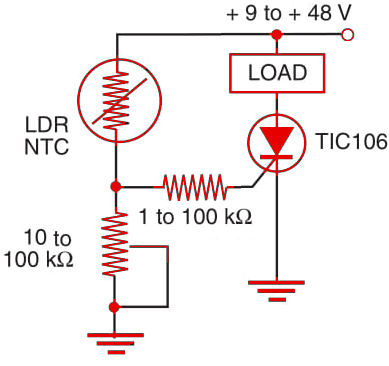Sensitive SCRs such as those of the 106 series (TIC106, IR106, MCR106, C106, etc.) can be triggered by short light pulses to drive loads such as solenoids, relays, motors, etc. The block shown in Figure 1 shows how this can be done.

The potentiometer needs to have a value about 2 to 5 times lower than the resistance of the sensor under normal (not excited) conditions. This potentiometer is used to adjust the triggering point of the circuit. Three important points must be taken into account in this configuration:
1. The SCR is a latching device when powered from dc sources. Once the SCR is on, it remains on even after the trigger pulse disappears.
2. A voltage drop of about 2 V across the SCR appears when it is in the on state. You must compensate for this voltage drop by increasing the power supply voltage.
3. To trigger the circuit off, it is necessary to turn off the power supply or add a momentary contact switch between the anode and the cathode of the SCR.
The same concepts used when an LDR is installed are valid for other resistive sensors. If NTCs are used, this circuit can function as an over temperature switch.



